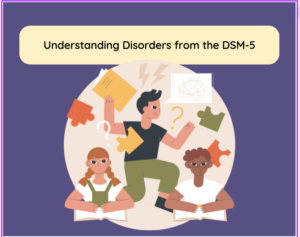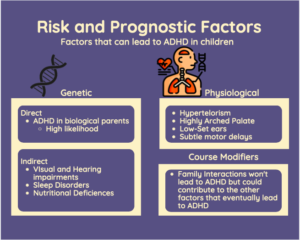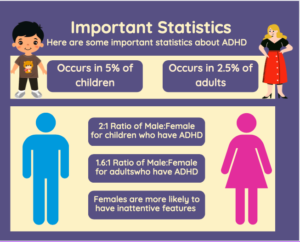Wait, I have ADHD?
Recently, I found out that I have ADHD, and it seemingly came at a time when many other women in the world were realizing the same thing. But why was I only getting diagnosed now, at 22? It’s a fact that ADHD is under-diagnosed in girls due to a multitude of reasons. The biggest being that plainly, ADHD looks different in girls and women than it does in boys and men. Little boys are usually the ones causing a raucous in school, where the girls try harder to please the teachers and impress their peers with scores. I know that as a little girl, I tried extremely hard in school always and was a bit of the teacher’s pet, which included following the rules super closely and avoiding trouble. It wasn’t until I was an adult that I began seeing posts on social media describing the under diagnosis of ADHD in women and the signs and symptoms that usually appear. This propelled me to reach out to a professional who tested me and confirmed that I had ADHD the whole time.
How the diagnosis affected me
Hearing the diagnosis was shocking, but also, made everything a little clearer at the same time. I could finally figure out why I behaved in certain ways where my friends behaved differently. I felt seen for who I truly was, and knew I could use this diagnosis to help myself adapt better. So when I found myself in my LMC class this semester, hearing a presentation on the DSM-5 from a classmate, my ears perked up when he began discussing ADHD. The assignment had been to create a plan to adapt a boring piece of technical writing into a more engaging piece of technical writing, and my classmate had chosen to adapt the DSM-5, focusing on the ADHD portion. He went on with his presentation to explain why he had chosen to adapt this, and his reasons really resonated with me. He spoke on how the DSM-5 is making it harder for professionals to diagnose to the fullest degree with the long, drawn-out look of the document and its hard to parse language. This immediately reminded me of the ADHD under diagnosis I had thought so much about.
The Adaptation Project
Our class was to watch all of the presentations, and vote for the person who had the best proposal and pitch for adapting their technical document. My first place choice was the student who did the DSM-5 since he had clearly captured my attention and convinced me of his pitch. The next part of the project involved the winners of the voting to be team captains, and head their teams on actually creating the adaptation. Thankfully, I was placed in the DSM-5 group and super excited to get started. We went on to create many comics elaborating on ADHD as a whole- the signs, the symptoms, and the statistics. Take a look below!
Conclusion
Learning that I had ADHD was relieving, illuminating, and insightful for me. It affected me in more ways than I knew because I found myself bringing it into my schoolwork in LMC 3403. As I spoke about in a previous article, I loved being in LMC 3403 because it allowed me to practice group-work, learn a lot about myself, and improve my technical writing. This adaptation assignment was my favorite and I love the comics we created in the end. I hope that in my lifetime we can shed more light on ADHD in young girls and try to correct the gap in diagnoses.






